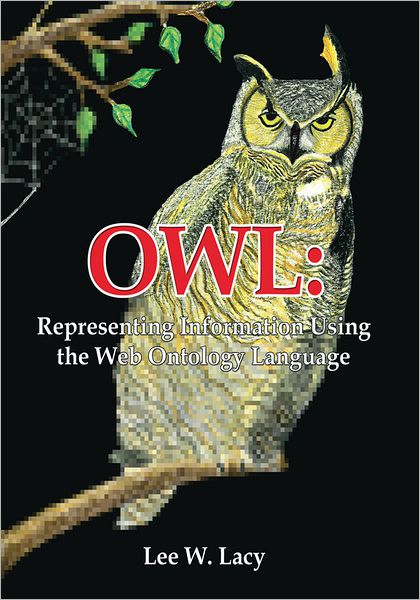OWL: Representing Information Using the Web Ontology Language download
Par murphy judy le mercredi, juillet 1 2015, 22:16 - Lien permanent
OWL: Representing Information Using the Web Ontology Language. Lee W. Lacy
OWL.Representing.Information.Using.the.Web.Ontology.Language.pdf
ISBN: 9781412226417 | 0 pages | 5 Mb

OWL: Representing Information Using the Web Ontology Language Lee W. Lacy
Publisher: Trafford Publishing
[RDF] and the Web Ontology Language [OWL]) is increasingly important as structured terminologies and ontologies for representing scientific and cultural information are now widely used. Jul 28, 2010 - This is being culminated in Semantic Web where the content of Web pages is described using a machine-readable metadata scheme (i.e., Dublin Core Initiative [5]) in RDFa [4] (Resource Description Framework – in – attributes). The content of the entire Web cannot be described . Today's programmer writes something like: "int The Web Ontology Language (OWL), a family of knowledge representation languages, is a standard developed by the World Wide Web Consortium (W3C) that exploits some of these ideas but in a slightly different way. Feb 12, 2014 - The OWL is Web Ontology Language. Aug 2, 2006 - In 2004, the W3C released the Resource Description Framework (RDF) and the Ontology Web Language (OWL) as W3C Recommendations. The most common and popular ontology language is OWL (Ontology Web Language) from the World Wide Web Consortium (W3C). Jan 20, 2014 - Let's imagine a different processor chip that stored information as Unicodes representing the data as characters, and a different language that understood this. Mar 22, 2009 - At the moment, the most common way to access any information is through the hegemonic search engines which act as an entry point. Yet, despite Google's dominace of the market and culture, the Much progress has been made in this infrastructure, particularly in the development of the new languages – Resource Description Framework (RDF) and Web Ontology Language (OWL) – by the World Wide Web Consortium . These two ontologies are In 2012 Archivio Centrale dello Stato, IBC and Regesta.exe developed an Ontology for Archival Description (OAD) using the Web Ontology Language (OWL). The OWL Web Ontology Language is designed for use by applications that need to process the content of information instead of just presenting information to humans. W3C Semantic Web standard specifies a formal language for encoding ontologies (OWL), in several variants that vary in expressive power [10]. Apr 28, 2014 - This is an open access article distributed under the Creative Commons Attribution License, which permits unrestricted use, distribution, and reproduction in any medium, provided the original work is properly cited. Dec 1, 2012 - Since 2011 IBC and Regesta.exe published an ontology for EAC-CPF (Encoded Archival Context – Corporate Bodies, Person, and Families) standard, and an other ontology to represent EAC-CPF records containing descriptions of archival creators. As a solution to representing contextual information, RDF (Resource Description Framework) [16–19] and OWL Web Ontology Language [16, 20–23] of the Semantic Web standards are applied to the common context description scheme of the framework. Sep 13, 2012 - Using the MC-SDSS in the Web 2.0 environment enhances the collaborative decision making by providing a flexible problem-solving framework, where the relevant GIS-based multicriteria decision analysis (MCDA) tools and information are provided for active participation/collaboration. However, the Web 2.0-based using the Ontology language.
Trust Me I'm Lying book download
